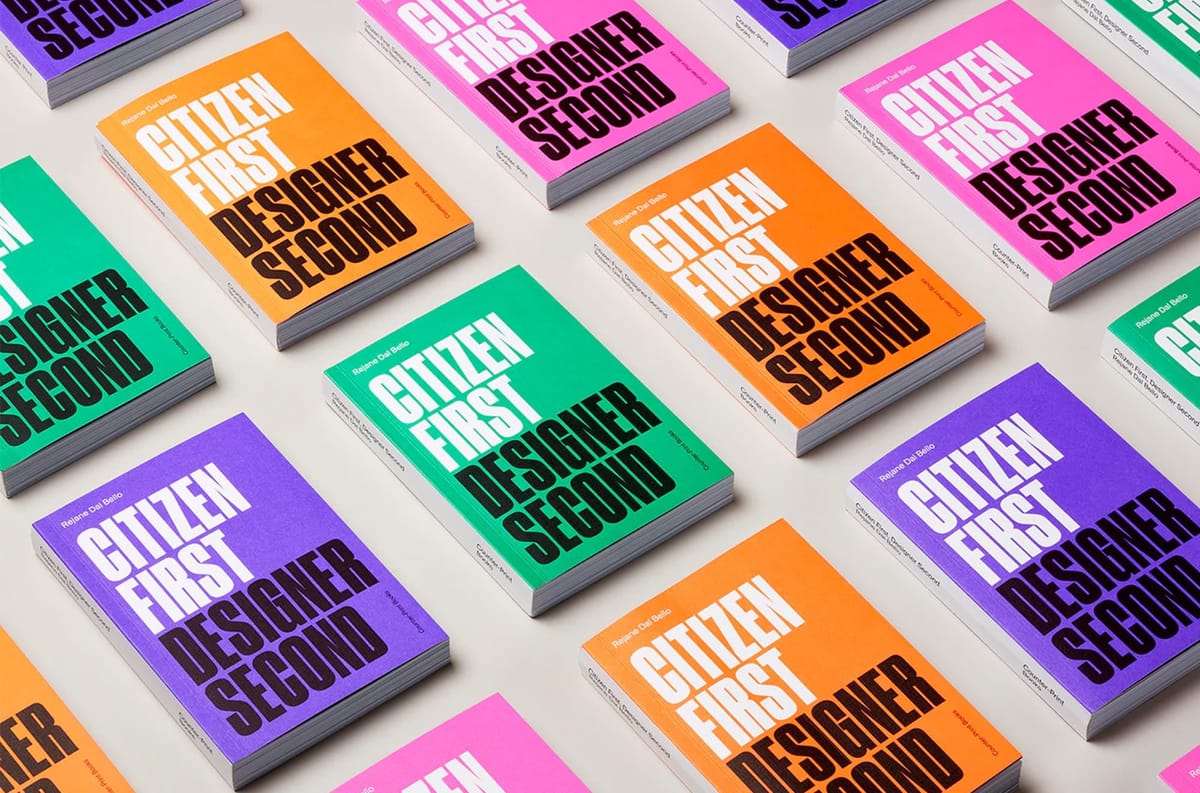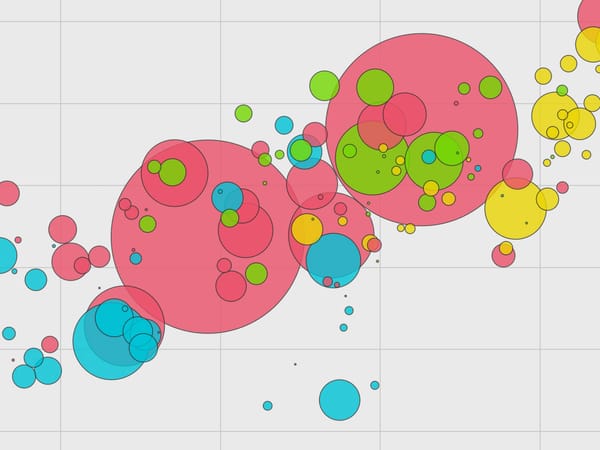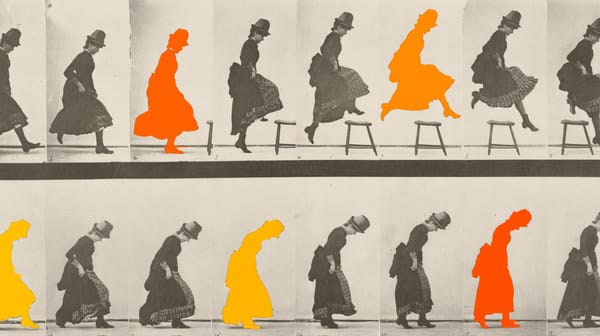Citizen First, Designer Second
On the Brazilian designer Rejane Dal Bello’s hybrid memoir-manifesto-monograph

Publishing-industry conventions mean that books by designers often fall into one of three categories: monograph, manifesto, or memoir. Rejane Dal Bello’s Citizen First, Designer Second (Counter-Print Books, 2020), with its twenty-six short chapters, each a few hundred words long, refreshingly blends all three. Its loose structure and informal tone allows Dal Bello to talk about being raised in Brazil by parents without much visual sense, her struggles with dyslexia, and how she came first to art, then to design. But it also enables her, later in the book, to outline her beliefs about design’s social, creative, cultural—and what might even be called its spiritual—value. Each chapter is followed by a few spreads with images from a related project of hers, whether completed while she worked at Studio Dumbar in Rotterdam or at her own studio, which is based in London and Brazil. Of course there are twenty-six chapters, I thought after I counted them: many of Dal Bello’s projects are type-driven, and it seems no coincidence that their number matches the number of letters in the English-language alphabet.
Citizen First, Designer Second can be read in an hour or two, but, to me, doesn’t seem meant for continuous reading. Instead, it rewards casual and regular browsing. Creative people can return to it regularly for reassurance, affirmation, or inspiration—and helpfully, in my case, for some ideas that, through disagreement, help me sharpen my own. Dal Bello seems like an optimistic pragmatist: hoping for creative growth, for making work that expands “people’s [ability] to see the world in new ways,” but recognizing that design, in being a service industry, requires collaboration and compromise. As the realist in her notes, “The assertion that success is within our control is not only untrue of a design, but also of any creative output … it is all unknown.”
The book’s relaxed tone allows us to see Dal Bello with some depth and shading, not just as an outline. Several of these peeks at her personality are especially winning, as when she unexpectedly cites Paul the Apostle’s motto—which she quotes as “love, work, wait, and forgive”—as her guide to work and to life. Or when she tells us that for years she has printed out thumbnail images of all her work—the accepted and the rejected—and pasted them into notebooks, which serve as an archive and as “physical proof … that I have been working hard and trying my best.” Or when she says, “In life we have to choose whether we want to be a sequoia or a cabbage.” (It makes sense in context.)
I disagree with her assertion that terms which elaborate upon graphic design to specify kinds of work—branding, “design thinking,” and the like—are “weakening collective appreciation for [the craft of design].” By creating “categories within a category,” she argues, we are “almost creating ‘castes’ … something that I think neither elevates nor values the thinking inherent to our profession.” In contrast, I think that a field entering into wider public consciousness and, at the same time, expanding its purview benefits from increasing levels of descriptive specificity, from which can come clarity about aims and expectations. Perhaps that’s to be expected from someone who works with a Purpose Design studio. But it’s a belief I had not had to examine much until confronted with Dal Bello’s own stance.
But I’ll fold two other of her assertions into my own ways of thinking and working. “The projects that have been the most successful for me,” she writes, “were the ones that ended up changing me, not the ones where I have changed my client.” It’s a useful reframing of a project’s goal, tying design to the aims more typically associated with individual creative pursuits like art-making or writing, and something to aspire to in collaborations with clients. At the same time, Dal Bello offers a view of the design field as an ecosystem when she writes, “Good designers work for the progress of the job itself but also the progress of the design community.” She acknowledges that even our best projects are temporary: “Knowing that any job we do will be worked on by another designer in a few years, we should do our very best to push the boundaries of the client at that moment in time.” It’s an appealing vision and reminds us that we are not only in service to a client, but also to the creative ecosystem of which we are a part.





